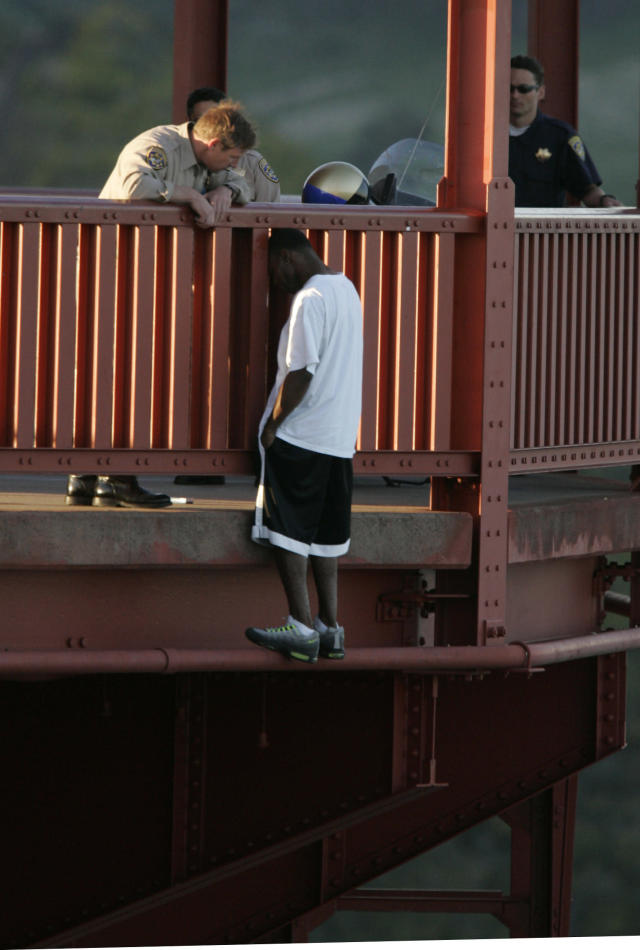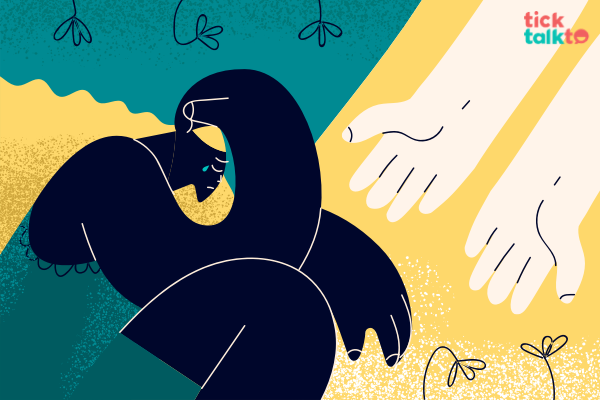“Hope is a necessity for normal life and the major weapon against the suicide impulse.”
Karl A. Menninger
A true story (with the name changed) … Rohit received approval for the college of his choice in the United States of America on a Friday morning and happiness knew no bounds among family and friends alike. Rohit had always been perceived as a dedicated, responsible, and passionate young man who performed admirably in his extracurricular, athletic, and academic pursuits. He receives congratulatory calls all day long and had a lengthy conversation with his father about the next steps in the admissions process later that night.
The family gets a call from the neighbourhood police station early on Saturday morning informing them of Rohit’s premature demise. In the early hours, he had jumped off a building not far from their home. The family rushed to the hospital where he was taken and they were far too shocked to even react. The relatives and friends of the victim, who were devastated by the untimely loss of this cherished young life, were plagued by many questions.
What happened over those brief hours? Has something been simmering for a while? Did he put on a pleasant front and go about conducting himself? What drove Rohit, who was in the prime of his life and seemed to have everything going his way, to make such an extreme choice? What did we fail to notice about him?
Suicide affects everyone, regardless of background, stratum, or gender. Someone you know well—a friend, relative, coworker, or even yourself—may be fighting the agony that drives them to act in such a desperate manner in silence.
The World Health Organisation WHO reports that suicide claims the lives of around 800,000 people annually, making it the leading cause of death for those between the ages of 15 and 29. But hidden beneath these figures are individual tales of loss, anguish, and despair. The International Association for Suicide Prevention and the WHO created World Suicide Prevention Day (WSPD) in 2003. Each year on the 10th of September, organizations, governments, and individuals from all over the world are urged to spread awareness of the issue, take steps to reduce stigma, and make it clear that suicides are easily preventable.
To foster hope by action, it is crucial to comprehend the enormity of this problem.
Who becomes suicidal and why?
Almost anyone can have suicidal tendencies. Causes can be one or more of the following:
- Underlying mental health conditions and severe conditions like depression, anxiety disorders, bipolar disorder, schizophrenia, and borderline personality disorder are likely to develop suicidal intentions and behaviours.
- Social isolation or loneliness, feeling disconnected from friends, and lack of a sense of belonging could heighten the feelings of giving up.
- Financial debt, legal issues, or the loss of a job could be overwhelming and isolating.
- Persistent bullying driven by the stigma associated with factors like race, gender identity, and sexual orientation may significantly heighten feelings of loneliness
- Relationship stresses like divorce, family disputes, the death of a loved one, and domestic violence could send someone to the verge of ending it all.
- Family history of suicide or mental health issues could increase an individual’s risk.
- Abuse of substances like alcohol, and drugs can contribute to risky behaviours and suicide.
How can you create hope for someone through your actions?
Another true story…Because of his inability to envision a way out of his indebtedness, Kevin Berthia of San Francisco, California, experienced deep sadness on March 11, 2005. He headed to the Golden Gate Bridge, which is not only an iconic structure but also a location for more than 1800 tragic suicides.
Kevin stepped over the bridge’s railing and got on the other side, his gaze locked on the Pacific Ocean, where he could perish. Officer Briggs of the California Highway Patrol attended the scene after responding to a report of a possible suicide. For the following 92 minutes, Officer Briggs listened as Kevin talked about his feelings of despair and gloom. Kevin makes the independent choice to cross the rail and go towards an area of safety. On asked what made him decide to give hope and life another try, he stated that it was the first time he had felt heard. He states that Officer Briggs gave him the freedom to express his struggles, desperation, and concerns.
Since then, Kevin has worked to prevent suicide and established the Kevin Berthia Foundation to inspire others to get help and talk through their issues rather than suffer in silence.
Less than 35 of the 1,800 jumping from the Golden Gate Bridge have survived. Nearly all the survivors declared their want to live as soon as they jumped.

It can be incredibly upsetting when someone you know talks about suicide or says things that sound like a suicide plan. You could be unsure how seriously to take the suicide conversation and consider whether becoming involved could worsen the problem.
The best course of action is always to act and this is what you could do:
- Do not ignore warning indicators like drastic changes in attitude and behaviour, feeling like a burden on others, talking about feeling worthless, “saying goodbye” to loved ones, or giving away necessities without a valid explanation.
- Start the conversation by asking direct questions concerning suicidal thoughts, intent, plans, and attempts. It enables you to judge how serious the situation is and may start a dialogue that results in the person seeking the support they deserve.
- How are you coping with the recent events in your life?
- Do you have any thoughts of harming yourself?
- Have you considered when or how you would go about doing it?
- Listen actively and encourage the individual to express their feelings, thoughts, and concerns openly. By simply being there, you could be the catalyst they need to bring in a change.
- Stay in their proximity and do not leave them unattended if they express thoughts of suicide or self-harm. Stay with them or recommend they go with someone they can depend on.
- Encourage meeting a professional or helpline and assure them they are not alone. Guide them to a mental health professional for assistance. Do not hesitate to contact emergency services if the person is in immediate danger or has a plan and the intention to harm oneself.
- Check on them occasionally and offer support even after they have received guidance from a professional. Since people who are thinking of ending their own lives often do not think they can be helped, you may need to be proactive and persistent to get them the assistance that they need.
- Additionally take good care of yourself after supporting a friend, a member of your family, or an acquaintance through a mental health crisis. Be mindful of how you may have been impacted emotionally and seek the care you need for yourself.
- Spread awareness and reduce stigma by promoting accurate information about the causes, precursors, and symptoms of suicide. Myths and misconceptions can be busted via education. Share personal tales or anecdotes about mental illness or suicide to put a human aspect to the problem and demonstrate that anybody could be affected.
TickTalkTo has been featured in Wikipedia’s List of suicide crisis lines. Our therapists are here to help and guide you and support you in times of distress. They are just a call or chat away. Download the app now.
If you encounter someone who needs immediate aid, there are several suicide helplines and organizations that offer support and assistance.
Suicide prevention is not the responsibility of any one person; it is a collective effort. Starting this Suicide Prevention Day, let us remember that hope is not passive; it is something we actively build through compassion, education, and support. By taking meaningful actions, we can be the source of hope for someone in crisis, illuminating the path toward a brighter future. Together, we can make a difference.
